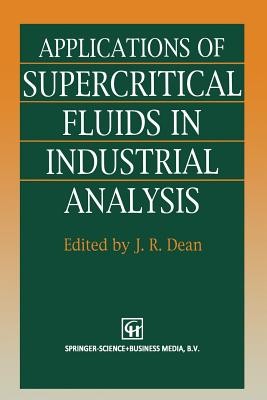
- We will send in 10–14 business days.
- SAVE -10% with code: EXTRA
Applications of Supercritical Fluids in Industrial Analysis (e-book) (used book) | bookbook.eu
Reviews
Description
The continued search for rapid, efficient and cost-effective means of analytical measurement has introduced supercritical fluids into the field of analytical chemistry. Two areas are common: supercritical fluid chroma- tography and supercritical fluid extraction. Both seek to exploit the unique properties of a gas at temperatures and pressures above the critical point. The most common supercritical fluid is carbon dioxide, employed because of its low critical temperature (31 °C), inertness, purity, non-toxicity and cheapness. Alternative supercritical fluids are also used and often in conjunction with modifiers. The combined gas-like mass transfer and liquid-like solvating characteristics have been used for improved chroma- tographic separation and faster sample preparation. Supercritical fluid chromatography (SFC) is complementary to gas chro- matography ( GC) and high performance liquid chromatography (HPLC), providing higher efficiency than HPLC, together with the ability to analyse thermally labile and high molecular weight analytes. Both packed and open tubular columns can be employed, providing the capability to analyse a wide range of sample types. In addition, flame ionization detection can be used, thus providing 'universal' detection.
EXTRA 10 % discount with code: EXTRA
The promotion ends in 18d.18:04:07
The discount code is valid when purchasing from 10 €. Discounts do not stack.
- Author: J R Dean
- Publisher: Springer
- Year: 2013
- Pages: 224
- ISBN-10: 9401049513
- ISBN-13: 9789401049511
- Format: 15.6 x 23.4 x 1.3 cm, softcover
- Language: English English
The continued search for rapid, efficient and cost-effective means of analytical measurement has introduced supercritical fluids into the field of analytical chemistry. Two areas are common: supercritical fluid chroma- tography and supercritical fluid extraction. Both seek to exploit the unique properties of a gas at temperatures and pressures above the critical point. The most common supercritical fluid is carbon dioxide, employed because of its low critical temperature (31 °C), inertness, purity, non-toxicity and cheapness. Alternative supercritical fluids are also used and often in conjunction with modifiers. The combined gas-like mass transfer and liquid-like solvating characteristics have been used for improved chroma- tographic separation and faster sample preparation. Supercritical fluid chromatography (SFC) is complementary to gas chro- matography ( GC) and high performance liquid chromatography (HPLC), providing higher efficiency than HPLC, together with the ability to analyse thermally labile and high molecular weight analytes. Both packed and open tubular columns can be employed, providing the capability to analyse a wide range of sample types. In addition, flame ionization detection can be used, thus providing 'universal' detection.


Reviews